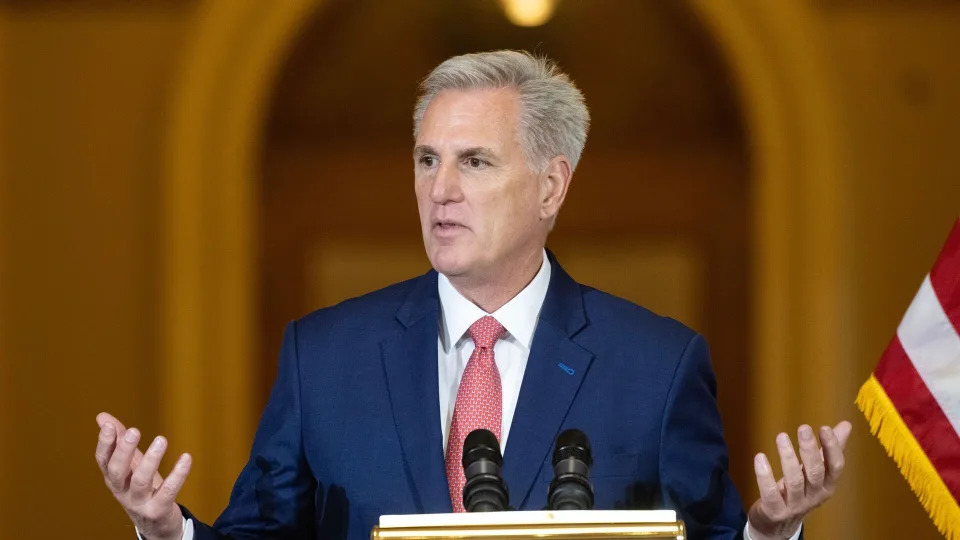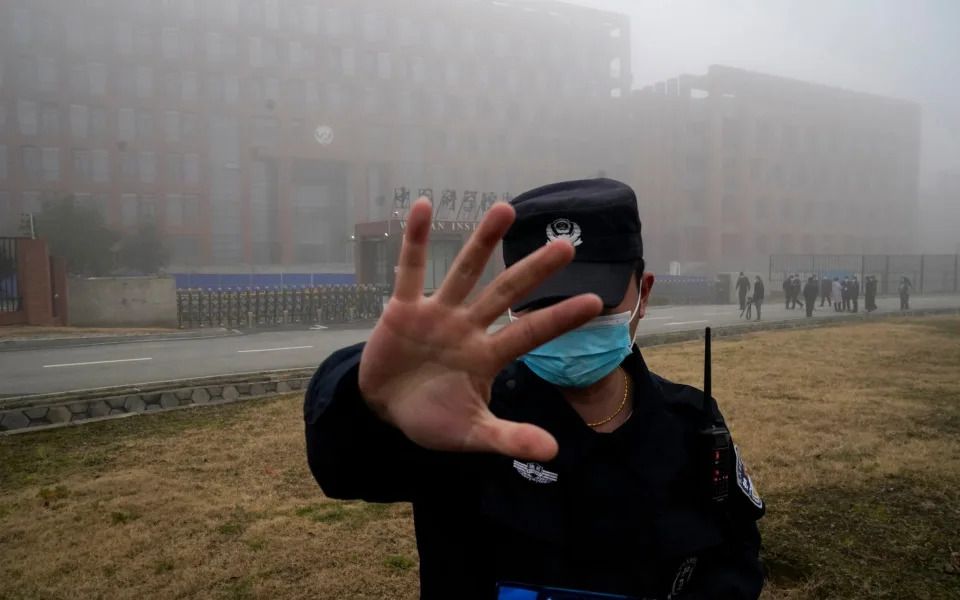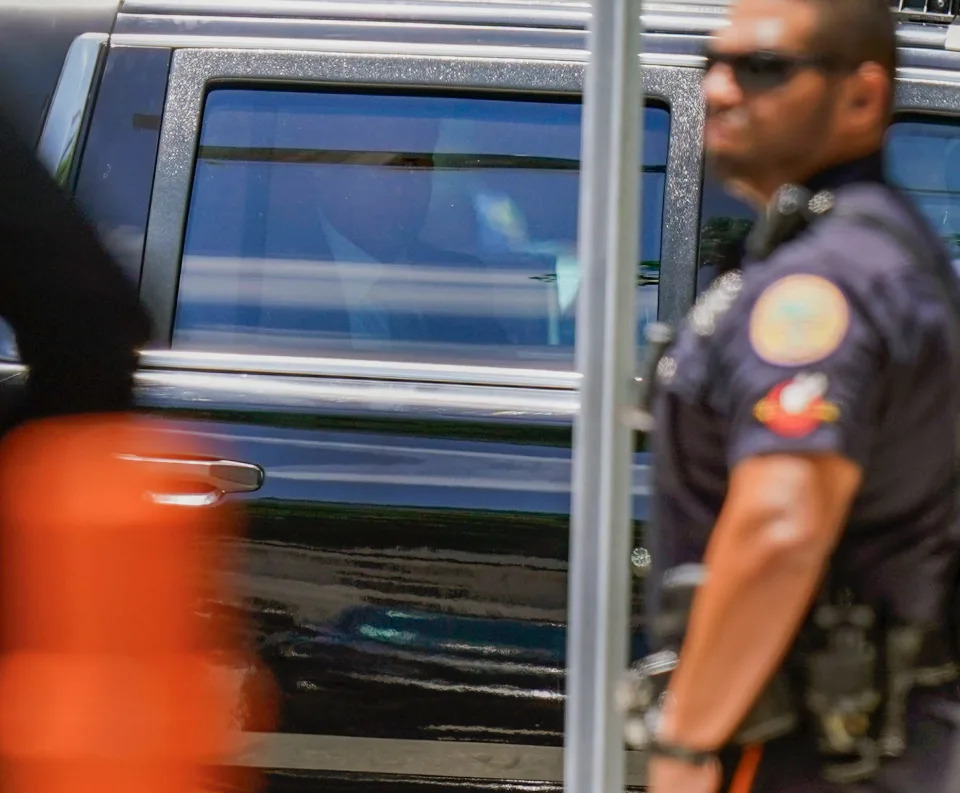Yahoo! News
Titanic submersible: 5 passengers on missing sub likely dead following ‘catastrophic implosion’
Christopher Wilson – June 22, 2023
The Coast Guard announced Thursday that it believed the five passengers who disappeared while attempting to explore the Titanic shipwreck were likely lost due to a “catastrophic implosion” of their vessel.
U.S. Coast Guard Rear Adm. John Mauger announced at a press conference that on Thursday morning, five major pieces of debris had been found on the seafloor about 1,600 feet from the site of the Titanic, a finding “consistent with the catastrophic loss of the pressure chamber.” Mauger said they then notified the families and offered their condolences.
Shortly before Mauger’s comments, the company running the expedition, OceanGate, announced that the five passengers “have sadly been lost.”
“These men were true explorers who shared a distinct spirit of adventure, and a deep passion for exploring and protecting the world’s oceans,” read the statement. “Our hearts are with these five souls and every member of their families during this tragic time.”
The grim announcement came four days after a 21-foot tourist submersible named the Titan was reported missing approximately 900 miles east of Cape Cod, triggering a massive search to find the vessel before its occupants ran out of oxygen.
The Titan had been projected to run out of its 96-hour supply of breathable air on Thursday morning. And because the door was bolted from the outside, those inside would not have been able to open it on their own even if they were able to reach the surface. Asked about the possibility of recovering remains, Mauger called the conditions “unforgiving” and said there weren’t prospects for doing so at this time.
A missing sub and extensive search
The Titan, operated by OceanGate, a private exploration company based in Everett, Wash., launched early Sunday morning to tour the Titanic wreckage with five passengers on board: OceanGate CEO Stockton Rush, 61; British billionaire and explorer Hamish Harding, 58; Pakistani businessman Shahzada Dawood, 48, and his 19-year-old son, Suleman; and Paul-Henri Nargeolet, a 77-year-old French explorer.
The Polar Prince, a Canadian research vessel and support ship for the expedition, lost contact with the submersible about an hour and 45 minutes after launch. OceanGate reported the Titan missing on Sunday evening, triggering a massive international search effort led by the U.S. Coast Guard and assisted by the U.S. Air Force, Navy, Air National Guard, Royal Canadian Navy and Canadian Coast Guard.
Read more on Yahoo News
- Reuters: Who were the passengers that perished on the Titan?
- AP: Coast Guard will continue searching seafloor for clues on what happened
- Yahoo News: Behind the sub tourism industry, where people pay $250,000 to visit the Titanic
A Canadian P-3 aircraft equipped with sonar listening equipment detected underwater “banging noises” on Tuesday and Wednesday, raising hopes that the Titan crew might be found alive. But Coast Guard officials cautioned at the time they were not sure what caused the noises even while remaining adamant that the search remain in the rescue phase.
“This is a search and rescue mission, 100%,” Frederick said Wednesday. “We are smack dab in the middle of search and rescue, and we’ll continue to put every available asset that we have in an effort to find the Titan and the crew members.”
Troubling signs
Founded in 2009, OceanGate charges up to $250,000 per person for a chance to visit the remnants of the Titanic, which sank in 1912 on its inaugural trip from England to New York. While Rush stated last year that the submersible had made it down to the wreckage a dozen times over the last two years, there had been a number of red flags about the operation. In 2018, more than three dozen oceanographers and deep-sea explorers wrote a letter to OceanGate warning that its “experimental” approach could lead to “catastrophic” consequences for its Titanic dives.
A 10-minute segment from CBS News Sunday Morning in November 2022 foreshadowed the tragedy. Journalist David Pogue discussed some of the paperwork he had to sign in an almost humorous tone, reading, “This experimental vessel has not been approved or certified by any regulatory body, and could result in physical injury, emotional trauma, or death,” before adding, “Where do I sign?”
In the 2022 piece, Pogue noted that while he was on the expedition the submersible never made it to the wreck site because of communications errors. He quoted one passenger as saying, “We were lost for two and a half hours.” Pogue’s own scheduled trip to the Titanic was canceled due to poor weather, and a back-up excursion to the trip to a Continental Shelf was called off due to technical difficulties after 37 feet of descent.
In a tweet Monday, Pogue said the craft was, in fact, lost for five hours and that adding an emergency locator beacon was discussed. Pogue added, “They could still send short texts to the sub, but did not know where it was. It was quiet and very tense, and they shut off the ship’s internet to prevent us from tweeting.” The company cited the need to keep “all channels open” as a reason for cutting off internet access, he said.
Another former passenger on the Titan told the BBC on Tuesday said he had to sign a “death waiver” that “lists one way after another that you could die on the trip,” including “[mentioning] death three times on page one, and so it’s never far from your mind.”


















